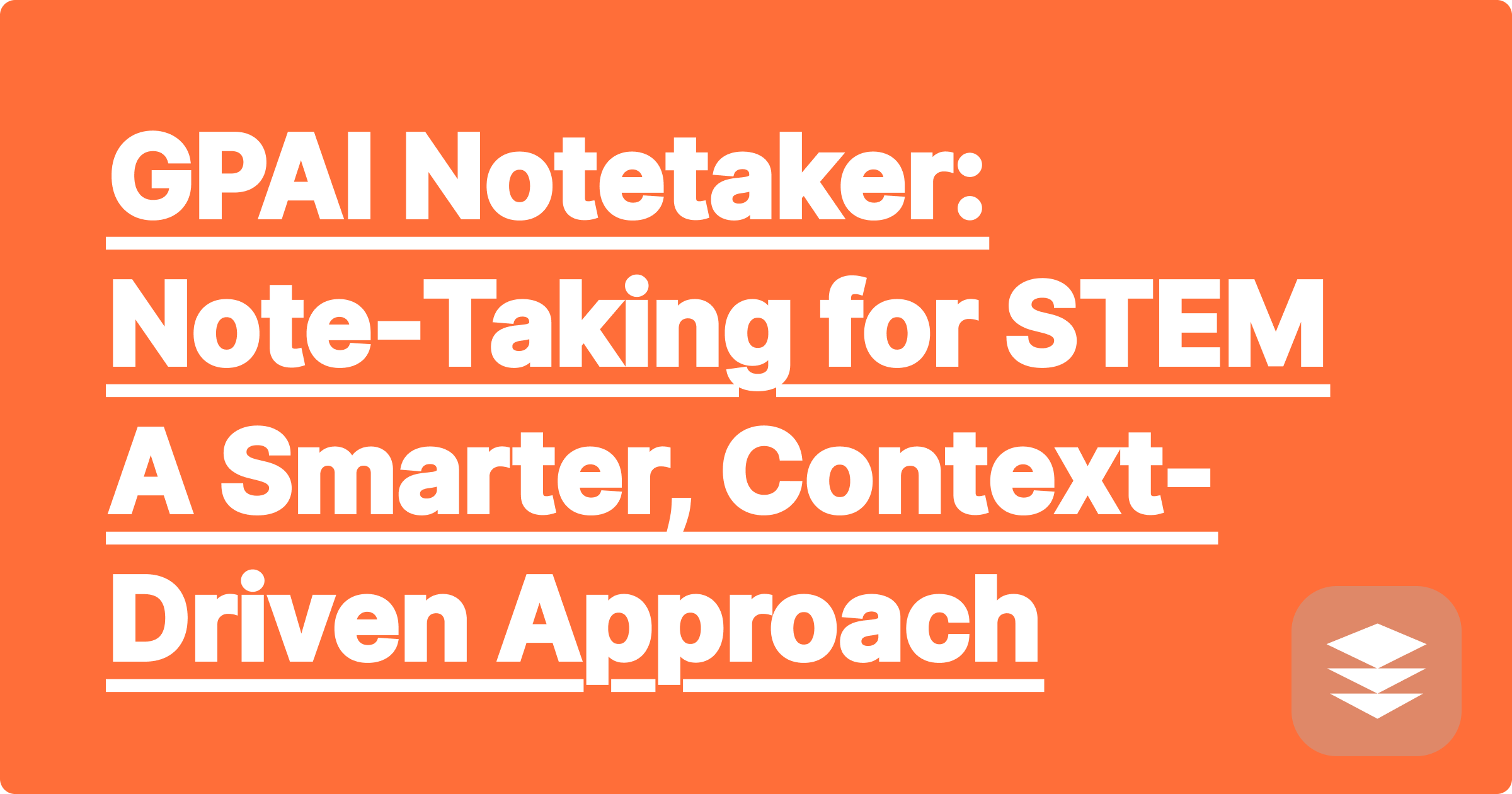
In the landscape of AI-powered transcription and note-taking tools, most products today—like Daglo or Tilo—prioritize one thing: perfect speech-to-text accuracy. But when it comes to STEM education, this approach doesn’t go far enough. STEM lectures are fundamentally different—and they demand a fundamentally new kind of NoteTaker.
Unlike liberal arts lectures where capturing every spoken word is crucial, STEM lectures often center around visual aids, mathematical notation, and structured progression. The Product Manager behind GPAI’s NoteTaker identifies a crucial insight:
“You don’t need to record everything the professor says—you just need to understand where the lecture began and ended. The rest, an LLM can intelligently reconstruct.”
This insight powers the core of our differentiation.
Rather than relying on flawless audio capture, GPAI NoteTaker uses multi-modal context to build structured, comprehensive lecture summaries. Here’s what sets it apart:
Even if some board notes or visuals are missing, the system is capable of intelligently inferring missing parts—producing clear, consolidated pages of notes, diagrams, and reconstructed content.
(i)
In a STEM setting, knowing what was said at the 17:42 mark of a lecture is irrelevant. What truly matters is having a single-page, well-structured summary that includes:
By focusing on the output students actually review, GPAI NoteTaker avoids information overload and delivers clarity where it matters most.
GPAI NoteTaker is proudly niche. It’s not built for business meetings or humanities seminars, and that’s by design. As confirmed by internal strategy lead Aki, the product is laser-focused on one thing:
“Helping STEM students capture, organize, and reconstruct the content that matters most—without needing to record every word spoken.”
It’s not transcription. It’s AI-enhanced synthesis—designed exclusively for the structure and rigor of STEM.
Would you like a visual mockup prompt (for image generation), or shall I proceed to write about how this NoteTaker integrates into the GPAI ecosystem?
GPAI - The Future of AI-Powered Academic Assistance
GPAI Solver: Redefining Problem-Solving in STEM Education
GPAI Cheatsheet: Your AI-Powered Modular Study Companion
GPAI Notetaker Rethinking Note-Taking for STEM: A Smarter, Context-Driven Approach
How to Get Human-Like Solutions for Your Physics Homework | GPAI Solver
Submit Your Math Homework in AI-Generated Handwriting | GPAI Solver
AI Math Tutor vs. Human Tutor: Which is Better for Calculus? | GPAI Solver
Best AI Homework Helper for College STEM Courses: 2024 Comparison | GPAI Solver
How to Check Your Math Work for Errors with an AI | GPAI Solver
AI for Engineering Students: A Thermodynamics Problem Solver | GPAI Solver